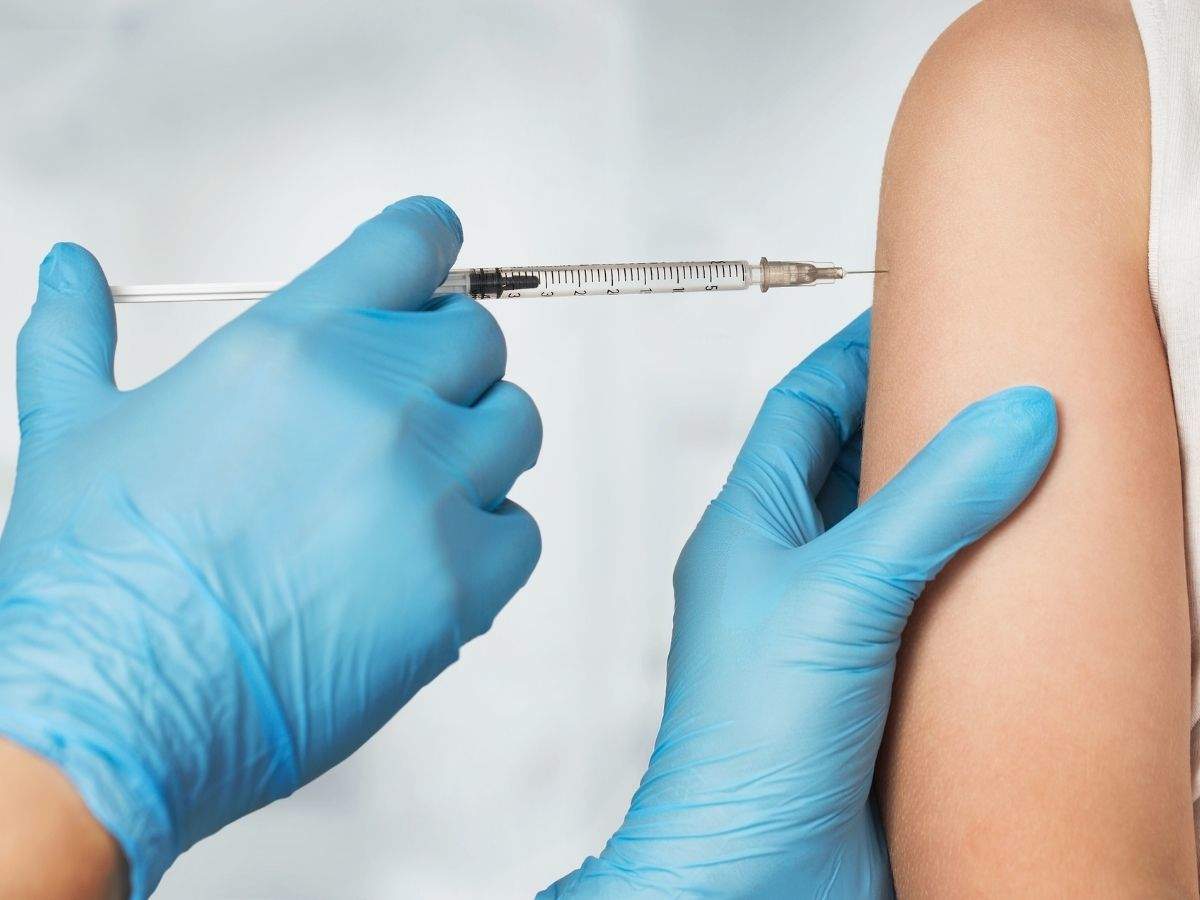TREE CLIMBING: Isolation used in past epidemics | Lifestyles - Herald-Banner
TREE CLIMBING: Isolation used in past epidemics | Lifestyles - Herald-Banner |
- TREE CLIMBING: Isolation used in past epidemics | Lifestyles - Herald-Banner
- 12 diseases and vaccines that can prevent them - Times of India
- Polio Vaccination Halted In Sabah Areas With High Covid-19 Cases - CodeBlue
| TREE CLIMBING: Isolation used in past epidemics | Lifestyles - Herald-Banner Posted: 28 Nov 2020 01:30 AM PST  Around the middle of March this year, Americans and other residents of our planet Earth were told to "shutter down." Something known as the coronavirus, or, more commonly called COVID-19, had invaded. Soon the disease became a pandemic. The only times Americans used that word were in 1918 at the peak of the Spanish Influence and the Polio pandemic that is still killing people in a few countries today. Polio peaked in 1952 when Dr. Jonas Salk concocted a cure for Polio. There were 21,000 cases of paralytic polio, a small number in comparison of the corona virus people in the world today face. Yet, when an epidemic like these attacks a population, what do people do? Interestingly, during previous contagious diseases, patients were told to eat outdoors and spend more time outside. Wash hands frequently. Isolation was encouraged and eventually regulated. Sound familiar? Even masks were worn for safety. Doctors and scientists quickly realized the same contagious effects spreading the disease and advised the use of previous methods. In the 19th century and earlier, contagious diseases were recognized but not properly treated. In fact, earlier doctors generally knew what to do about 25% of the time, and relied on old myths and cures another 25%. But the real reason patients recovered was the bedside manners of most doctors. Not surprisingly, here in the United States, there were four major causes of deaths. Consumption, the original name for tuberculosis, was the leading cause of deaths. The symptoms were very obvious, but the cure was ages in being found. Most of the time the patient was sent to an asylum, often in the desert or mountains. The bacterial diseases affect mainly the lungs. Like COVID-19, some infected persons did not have symptoms but recovered on their own. Consumption or tuberculosis is an airborne disease that is now usually treatable and preventable with vaccine. Diphtheria was the second worst disease. Also a bacterial carried disease, it starts with a serious infection in the nasal passages and throat. Today, it can be treated with antibiotics and vaccine. Typhoid fever was often rampant in the fall in most of the South. It was spread through contaminated food and water causing high fever, abdominal pain and diarrhea. Small, green vegetation developed on the top of the water barrel. When the patient began to show symptoms, the caregiver would withhold water and the patient would die of dehydration. Today, it too is treated with antibiotics and vaccination. The fourth major cause of death in the United States was accidents. What can be said since accidents are still prevalent? In 1880, the United State Census Bureau included a statistical profile of causes of death. Physicians were sent a register to keep a record, although it was not always done. There were 309 deaths recorded in Hunt County that year. Seventy-six infants under the age of 1 year died from whooping cough and croup. Pneumonia, consumption, typhoid fever, malaria, heart disease, and diphtheria caused most deaths. Childbirth and stillbirth were also common. Ironically, no deaths were reported from old age. Taylor is chairman of the Hunt County Historical Commission. She can be contacted at carol@carolctaylor.com. |
| 12 diseases and vaccines that can prevent them - Times of India Posted: 28 Nov 2020 03:30 AM PST  Besides disrupting the lives of millions of people, the novel coronavirus has highlighted the importance of treatments and vaccinations in and around the world- something that we took for granted for many years. While scientists and medical researchers are continuously working towards developing a possible cure for the deadly virus, it is important and necessary to acknowledge the dangers posed by the diseases that existed prior to COVID-19. That being said, here is a list of 12 diseases that can harm your loved ones, especially children and their vaccinations to prevent them. 02/13PolioPolio is a medical condition, which is a deadly infectious disease. According to reports, 1 in 200 people can get paralyzed after being affected by the poliovirus. The virus can spread from one person to another and can spread to an infected person's brain and spinal cord, leading to major paralysis. Vaccine: The vaccine for polio is called IPV. Doctors recommend that your child get four doses of the same. 03/13Haemophilus influenza type b (Hib)Haemophilus influenza type b (Hib) causes pneumonia, meningitis and other severe infections. It is more prevalent in children and can do serious damage to a child's immune system. Vaccine: Hib vaccines help to prevent Haemophilus influenza type b infection small children. 04/13TetanusTetanus is a disease that can cause painful muscle contractions and lockjaw in children. It can also be fatal and can prove dangerous even after treatment. Vaccine: DTP provides protection against tetanus, diphtheria, and pertussis (whooping cough). 05/13Hepatitis AHepatitis A is a contagious liver disease and is transmitted through person-to-person contact or through contaminated food and water. Vaccine: Hepatitis A vaccine was developed in 1995 and since then has lowered the number of the cases. 06/13Hepatitis BHepatitis B is an infectious liver disease spread through blood and bodily fluids. It can also be transmitted from a mother to a child during birth. Vaccine: Hep B vaccines can prevent children from contracting the virus later in life. 07/13MeaslesMeasles is a highly contagious disease that is extremely prevalent in young children. The symptoms can range from fever, runny nose, white spots in the back of the mouth to rashes all over the body. Vaccine: MMR is a vaccine that can help prevent children from contracting the disease. 08/13TuberculosisTuberculosis or TB as it's popularly known, affects different parts of the body, especially the lungs. In infants and children, it can affect the brains. Vaccine: To prevent your child from developing TB, you must give them BCG shots. 09/13DiphtheriaDiphtheria is a disease that attacks the throat and tonsils, making it hard for children to breathe and swallow. It can also lead to heart failure, paralysis, and even death. Vaccine: DTP helps keep Diphtheria at bay and protects your child from contracting the disease. 10/13MumpsMumps is a disease identified by swollen jaw and puffy cheeks. Symptoms may include fever, headaches, joint pain and more. Vaccine: An MMR vaccine can protect you and your family against mumps, measles, and rubella. |
| Polio Vaccination Halted In Sabah Areas With High Covid-19 Cases - CodeBlue Posted: 11 Nov 2020 12:00 AM PST KUALA LUMPUR, Nov 11 — About 81 per cent of Sabah children have received two doses of the monovalent oral polio vaccine (mOPV) as of October 21 in a polio vaccination campaign, Dr Adham Baba said. According to the health minister, the Ministry of Health's (MOH) Sabah polio immunisation campaign had slowed since the first phase of the Movement Control Order (MCO) implemented nationwide from March 18 amid the Covid-19 epidemic. The polio vaccination campaign was revived during the Recovery Movement Control Order (RMCO) that started on June 10. But active vaccination activities were halted in areas in Sabah that reported an increase of Covid-19 cases after a recent coronavirus surge hit the state, said Dr Adham. "Till October 21, 2020 a total of 815,846 (95.6 per cent) of children have received two doses of bivalent oral polio vaccine (bOPV) while 688,016 (80.6 per cent) of children in Sabah have received two doses mOPV vaccine," Dr Adham said in his written Parliamentary reply on November 3. MOH's polio immunisation campaign in Sabah started on December 27 last year when a polio case was detected last December 8 in the state, the first time in the country in 27 years. "The campaign has been carried out since December 27, involving giving two types of oral polio vaccine — which is the bOPV type one and type three and mOPV type two — that is given in drips into the mouth," Dr Adham said. "In this campaign, every child below the age of 13 around the whole state of Sabah will be given the bOPV and mOPV vaccine, with each vaccine given in two doses." Sipitang MP Yamani Hafeez had asked the health minister to state the seriousness of polio cases that have been reported of late, especially in Sabah, and if the ministry has adequate numbers of vaccines to be given to the patients. Besides that, Yamani also asked Dr Adham to state how the polio disease re-emerged in Malaysia in 2019, after a long period of being free from the virus. According to the health minister, after the last case of polio reported 27 years ago, a new polio case was reported in Sabah on December 8. As of now, there are four confirmed polio cases in Sabah, involving a three-month-old baby and children aged three, eight, and eleven. "The last case reported had symptoms of paralysis on January 18, 2020," Dr Adham told Yamani. "Among the four polio cases, one case is still being treated in hospital, needing ventilator support, while three other cases are still experiencing weak legs but are able to walk with support." Polio is a disabling and life-threatening disease caused by the polio virus that is very contagious and spreads through person-to-person contact. Most people who get infected with the polio virus will not have any visible symptoms, while about one in four patients have flu-like symptoms, such as sore throat, fever, tiredness, nausea, headache, and stomach pain, and a smaller proportion of people develop more serious symptoms like paresthesia (feeling of pins and needles in the legs), meningitis (infection of the coverings of the brain), and paralysis (weakness of limbs). Besides that, Dr Adham said through environmental sampling that was conducted, the polio virus was detected in 24 wastewater samples taken in Sabah, as well as in one wastewater sample taken in Labuan. "The last positive environmental sample detected with the polio virus was on March 13, 2020." According to MOH, one of the causes of the polio infection in Sabah was because of the frequent mobilisation among foreigners who frequently cross the borders between the Philippines and Sabah. These immigrants also do not have a immunisation record, which puts them at a higher risk of getting infected with the polio virus. |
| You are subscribed to email updates from "poliomyelitis symptoms" - Google News. To stop receiving these emails, you may unsubscribe now. | Email delivery powered by Google |
| Google, 1600 Amphitheatre Parkway, Mountain View, CA 94043, United States | |

Comments
Post a Comment